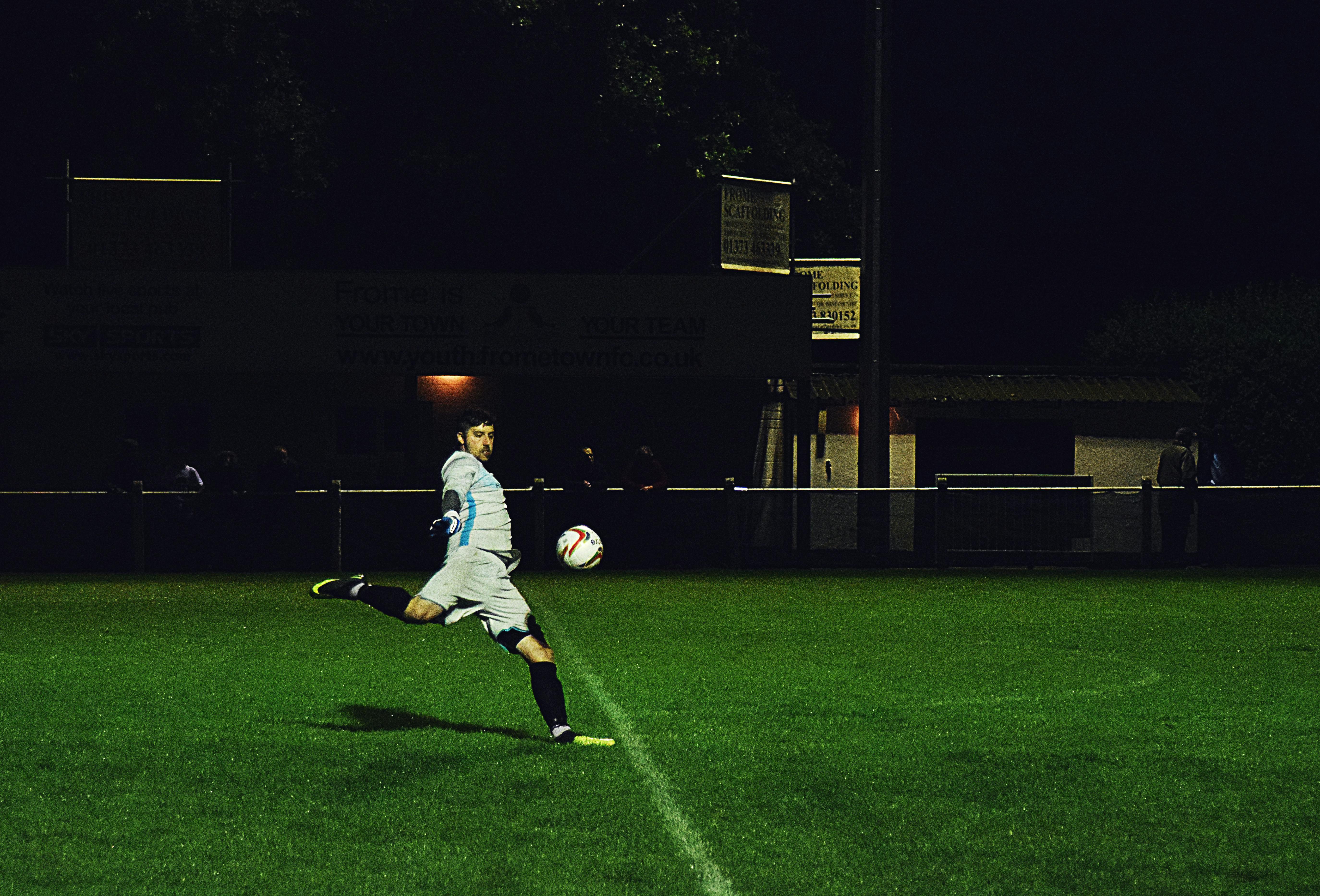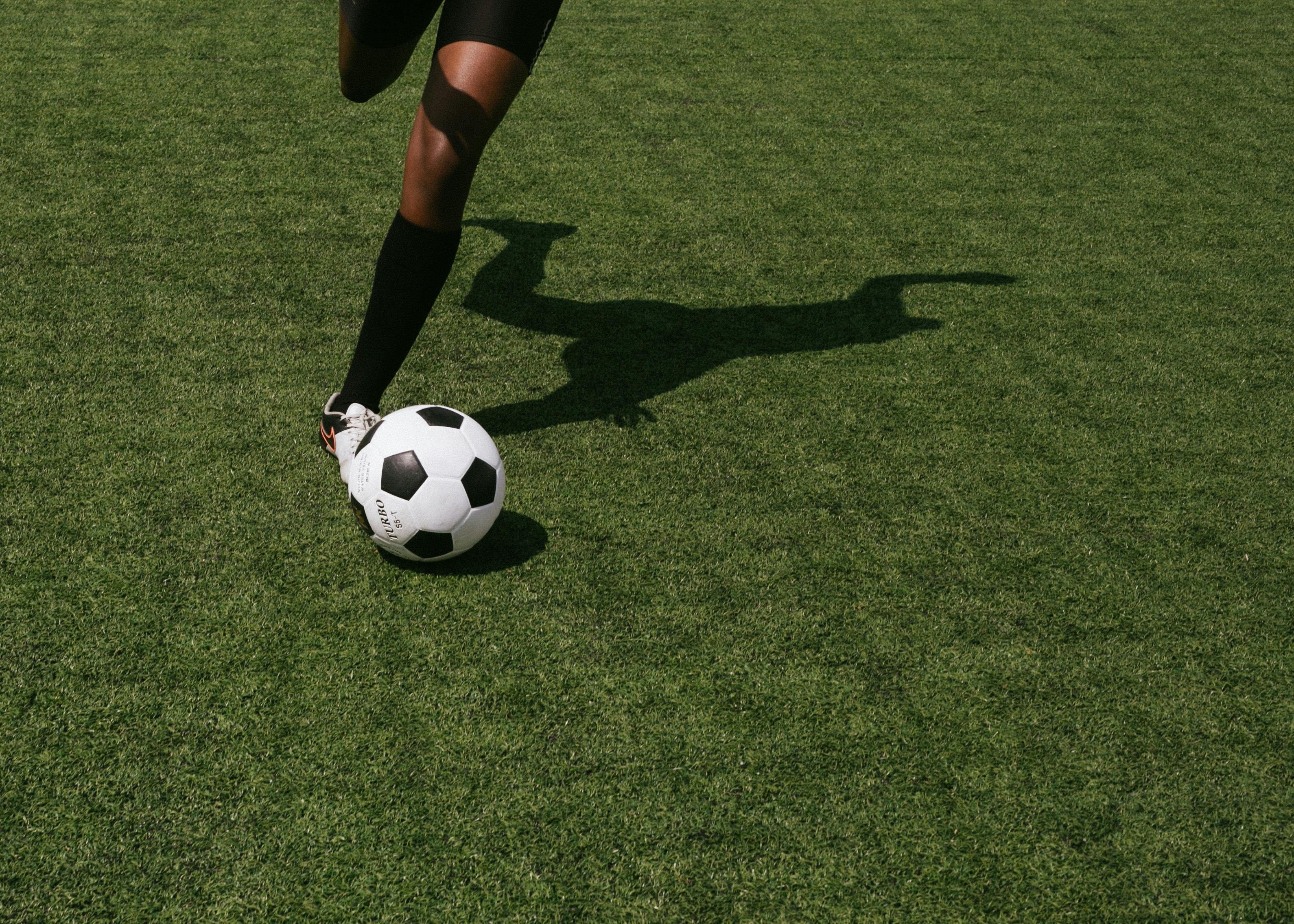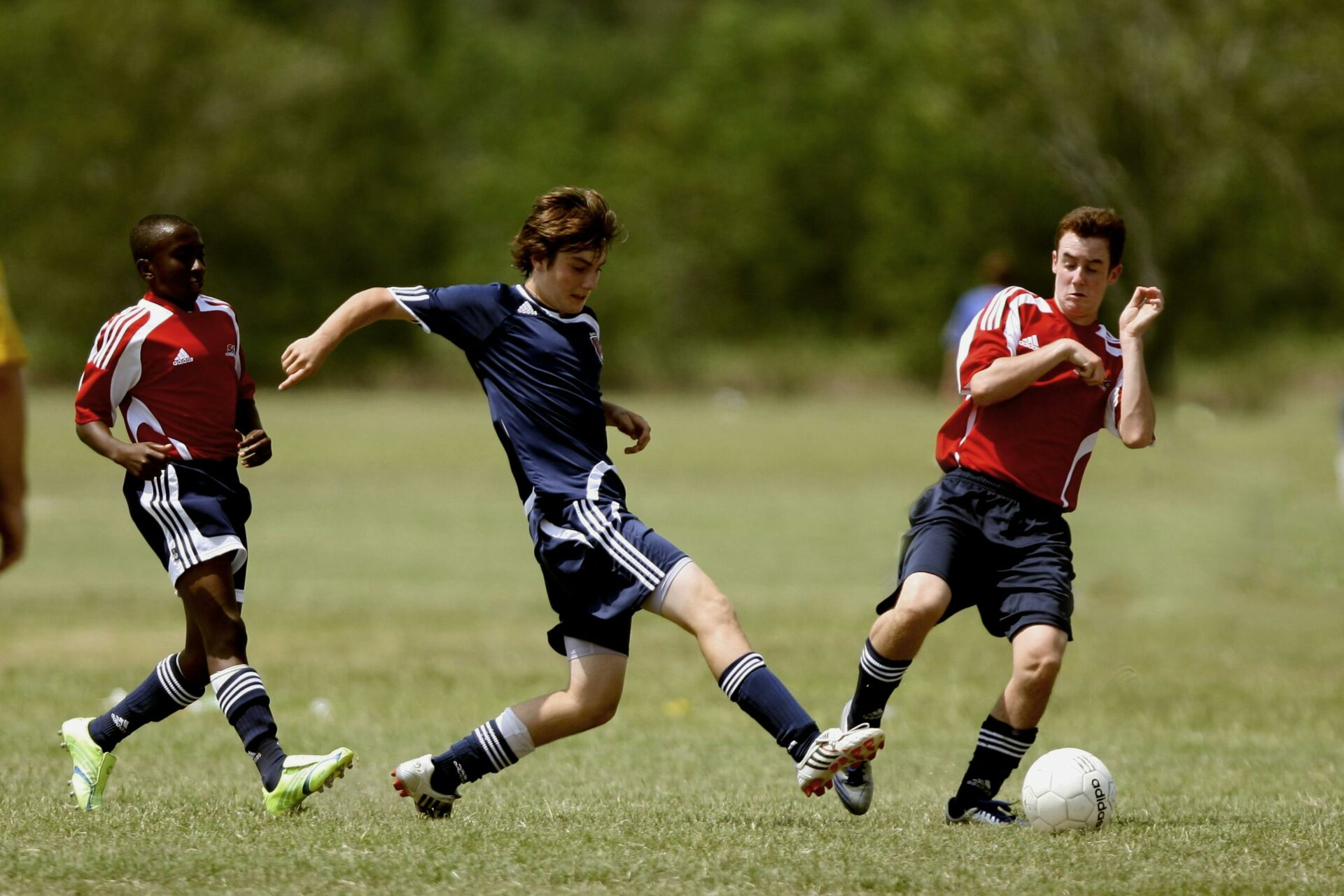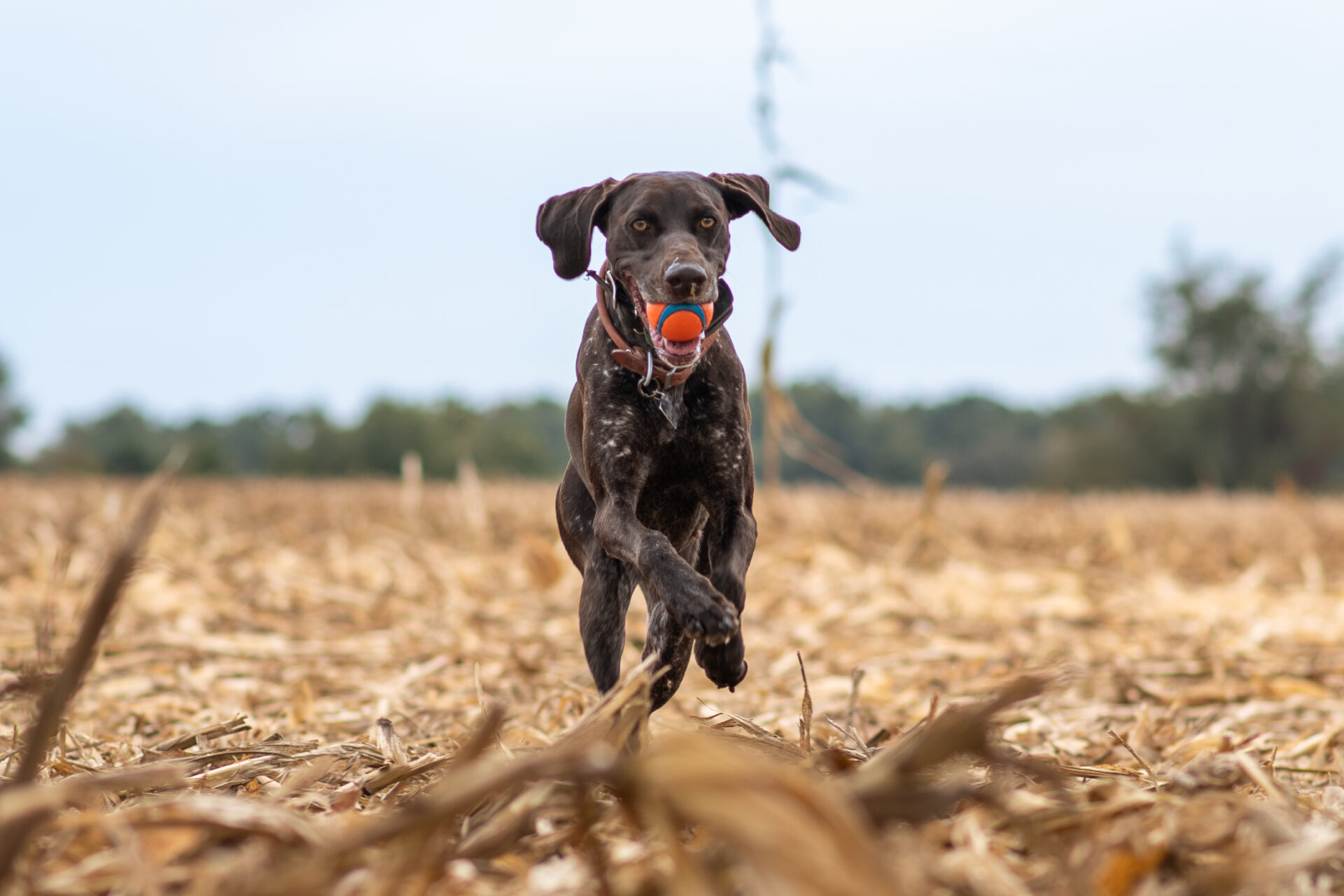Kicking a soccer ball with speed and accuracy is an important skill for any soccer player. But just how fast can you kick a soccer ball? This article will explore the science behind kicking a soccer ball and provide tips on how to increase your kicking power. You will also learn about the world record for the fastest kick of a soccer ball, as well as what factors affect how fast you can kick a soccer ball.The speed at which you can kick a soccer ball depends on several factors such as your strength, technique, and the size of the ball. Generally, an average adult can kick a soccer ball at speeds of around 50 to 60 miles per hour. Professionals can kick the ball much harder, with some players reaching speeds of up to 80 miles per hour.
Strength
Strength is a key factor in determining kicking speed. The more powerful the leg muscles are, the more force can be applied to the ball and the faster it will travel. Stronger legs are also less prone to injury, allowing for more consistent kicking performances. Strengthening exercises such as squats, lunges, and step-ups can help develop muscle strength and power in the lower body.
Flexibility
Flexibility is important for increasing kicking speed and reducing the risk of injury. Tight muscles can limit range of motion, making it harder to generate force behind each kick. Incorporating stretching exercises such as dynamic stretches into a warm-up routine can help increase flexibility in the lower body muscles and joints.
Balance
Good balance is essential for proper technique when kicking a ball. Poor balance can lead to inaccurate or slower kicks due to an inefficient transfer of energy from the lower body to the ball. Balance exercises such as single-leg squats or standing on one foot can help develop balance and stability in the legs.
Technique
Having proper technique is important for maximizing kicking speed. Poor technique can lead to slower kicks due to a lack of efficiency in transferring energy from the body to the ball. Working with a coach or specialist can help identify mistakes that may be slowing down your kicks and correct them with proper technique drills.
Reaction Time
Kicking a ball requires quick reactions and decision making skills in order to place it accurately where you want it to go. Improving reaction time through drills such as reaction agility ladders or plyometric exercises can help you become quicker at reacting and making decisions when kicking a ball.
Types of Kicks Used in Soccer
The most common type of kick used in soccer is the instep drive, which involves kicking the ball with the laces of your shoe. This kick is used to propel the ball forward and is often seen during goal kicks, corner kicks, and free kicks. Another type of kick is the outside of the foot kick, which involves using the side of your shoe to kick the ball. This type of kick is often seen during corner kicks or when a player wants to make a quick pass.
The inside of the foot kick is also popular in soccer and involves kicking with the inside part of your shoe. This type of kick is used for precision passing and shooting. Players will often use this kind of kick when they want to place a shot in a specific area or when they need to make a precise pass. Finally, there are heel kicks which involve striking the ball with your heel rather than your laces or toes. This type of kick is usually used when players need to quickly turn or change direction without losing control over the ball.
In addition to these basic types of kicks, there are many variations that can be used depending on what situation a player finds themselves in. For example, players can use their thigh or chest to control and pass a ball while running at full speed. They can also use their head to direct passes or shots on goal if they have enough power behind them. With all these different types of kicks available in soccer, it’s important for players to practice them all so that they can become more effective on the field.
Proper Technique for Kicking a Soccer Ball
Having the proper technique when kicking a soccer ball is essential in order to maximize power, accuracy, and control. The angle of the foot is the most important factor in determining the power and accuracy of your kick. To achieve maximum power, your foot should be pointed slightly downward and make contact with the ball at an angle of about 45 degrees. To make sure you maintain accuracy when attempting to kick the ball into a specific area, your foot should be pointed directly at that area.
When making contact with the ball, you want to make sure that you don’t over strike it and that you keep your ankle locked. This will ensure that all of your power is transferred into the ball instead of being wasted. Additionally, it’s important that you follow through with your kick by keeping your leg extended until it reaches its full extension after making contact with the ball.
It’s important to remember that soccer is a game where balance and coordination are essential. Therefore, before attempting any type of kick, make sure to practice proper form and technique. This will help ensure that all of your power is transferred correctly and will also help you maintain balance while kicking the ball. Additionally, practicing regularly will help improve muscle memory and allow you to kick more accurately and powerfully each time.
Finally, remember that no matter how perfect your technique might be, there are other factors such as wind speed or field conditions which can affect how well you are able to kick a soccer ball. Therefore, it’s important to always keep these factors in mind before attempting any type of shot or pass in order to maximize success on the field.
Increasing Kicking Speed
Kicking speed is an important part of a soccer player’s performance. A successful kick requires the right technique, strength and speed. To increase kicking speed, soccer players must use a combination of drills, weight training and stretching to improve their technique and increase their power. Here are some tips for increasing kicking speed:
1. Improve Technique: Improving kicking technique is critical for increasing kicking speed. Start by focusing on body posture and balance when taking a kick. Be sure to keep the head up during the kick and maintain a steady stance throughout the entire motion. It is also important to practice proper foot placement when striking the ball – the instep should be used for most kicks.
2. Strength Training: Strength training can improve kicking power and speed by helping to build leg strength and power in the hips, core, glutes and quads. Soccer players should focus on exercises that target these muscle groups such as squats, lunges and calf raises. Weighted vests or ankle weights can be used to add resistance during exercises for maximum results.
3. Stretching: Stretching before each practice or game is essential for soccer players to prevent injury and improve flexibility, which can help increase kicking speed as well as accuracy when shooting or passing with both feet. Dynamic stretches such as high knees or butt kicks are effective for warming up muscles before exercise while static stretching such as lunges or calf stretches should be done after practice or competition to cool down muscles properly.
4. Plyometrics: Plyometric exercises like box jumps, jump squats and burpees are powerful tools for improving explosiveness in the legs which will help soccer players develop more power in their kick while also increasing their running speed over short distances on the field. These exercises involve explosive movements so it is important to build up gradually in order to avoid injury from overtraining or improper form.
By following these tips, soccer players can improve their kicking technique, strength and flexibility which will lead to increased kicking speed over time. With regular practice and dedication, these tips will help soccer players reach their full potential on the pitch!

Types of Shoes for Improved Kicking Power
Kicking power is an important aspect of soccer, and the right pair of shoes can make all the difference in your performance on the field. Soccer shoes come in a variety of shapes and sizes, and choosing the right one can be a daunting task. Here are some of the most popular types of shoes that can help you improve your kicking power:
Cleats: Cleats are designed for maximum traction on grass or synthetic turf surfaces. They feature a cleat pattern that helps provide extra grip on the ground, allowing you to generate more power with each kick. Cleats come in various types, such as molded or detachable, and they are available in different heights to suit your playing style.
Firm Ground Boots: Firm ground boots are designed for use on firm natural surfaces like grass or dirt. They feature a combination of studs and blades that help provide maximum traction on firm surfaces. The studs provide grip while the blades allow for quick changes in direction and increased kicking power.
Indoor Shoes: Indoor shoes are designed specifically for use on hard surfaces like wood floors or artificial turf. They feature thin rubber soles with minimal tread to provide optimal grip while playing indoors. The lightweight design allows you to move quickly without compromising your kicking power.
Turf Shoes: Turf shoes are designed for use on artificial turf surfaces. They feature rubber studs that provide superior traction and control when playing on artificial turf fields. The studs also help reduce friction while playing, allowing you to generate more power with each kick.
Choosing the right pair of shoes is essential if you want to maximize your kicking power on the field. Be sure to find a pair that fits your feet comfortably and provides optimal traction for your playing surface, so you can get the most out of every kick!
Finding the Best Balls to Use for Maximum Speed
When it comes to golf, there are a variety of different balls available in the market. Each ball has its own unique characteristics that can affect the performance of a golfer. Selecting the right ball for maximum speed is important for any golfer looking to improve their game.
The first step is to understand the different types of balls and what features they offer. The most common types of golf balls are two-piece, three-piece, and four-piece. Two-piece balls are the most basic and offer little spin potential, while three-piece and four-piece balls offer more spin potential.
The next step is to determine which type of ball will provide the best balance between speed and spin. This will depend on a golfer’s swing style and individual needs, as some players may prefer more spin while others may prefer additional distance. Generally speaking, two-piece balls are best suited for beginner golfers who need more distance, while three-piece or four-piece balls are better choices for experienced golfers who need more control over their shots.
Once you know which type of ball is best suited for your game, it’s important to choose one with an appropriate compression rating. Compression ratings range from low (50) to high (100). Low compression balls are softer and offer less spin potential but more distance; high compression balls provide better control but less distance. The best option is usually somewhere in between these two extremes—a mid compression ball offers a good balance between speed and control.
Finally, it’s important to select a ball that suits your budget as well as your preferences. There are many different brands offering a wide range of prices so do your research before making a purchase. Make sure you check reviews from other golfers before settling on one particular brand or model.
By taking all these factors into consideration when selecting golf balls, you’ll be able to find the perfect model for maximum speed and performance on the course!
The Benefits of a High-Speed Kick
High-speed kicks are an essential part of any martial arts training regimen. With the right technique and training, a high-speed kick can be a powerful attack and defense tool. There are several benefits to mastering the art of the high-speed kick.
One benefit of a high-speed kick is that it can be used to surprise an opponent who may not be expecting it. A fast and powerful kick can catch an opponent off guard, allowing you to gain an advantage in the fight. This is particularly useful in sparring or self-defense situations.
Another benefit is that it can help you increase your overall speed and power. Developing strong kicking techniques requires practicing at high speeds. As you build up your speed and power, you will see improvements in other areas of your martial arts training as well.
High-speed kicks also provide an excellent cardio workout, helping you to stay fit and healthy while improving your martial arts skills at the same time. Additionally, they help build coordination and balance by requiring quick movements and precise timing.
Finally, mastering the art of the high-speed kick requires discipline and dedication—two traits that will help you in all aspects of life, not just martial arts. As such, studying a martial art like Muay Thai or Taekwondo is a great way to improve both your physical and mental well being.

Conclusion
Kicking a soccer ball is an essential skill for any soccer player. It is not only important to know how to kick the ball accurately, but also how to kick it fast and powerful. Through practice and dedication, you can learn the fundamentals of kicking a soccer ball and improve your speed and accuracy. Every player’s ability to kick a soccer ball varies, so it’s important to practice in order to perfect your technique. With the right technique and a bit of determination, you can become an expert at kicking a soccer ball with speed and accuracy.
In conclusion, learning how fast you can kick a soccer ball requires time, practice and dedication. It is important to have proper technique when kicking the ball in order to achieve maximum power with minimal effort. With correct practice, you can master the fundamentals of kicking a soccer ball and increase your speed over time.




